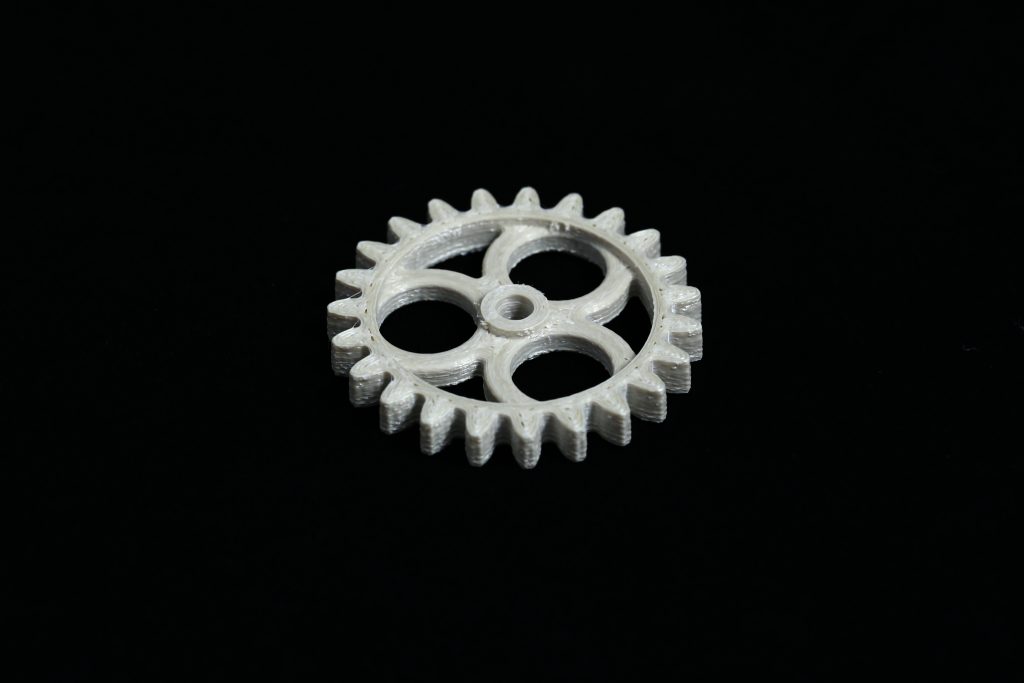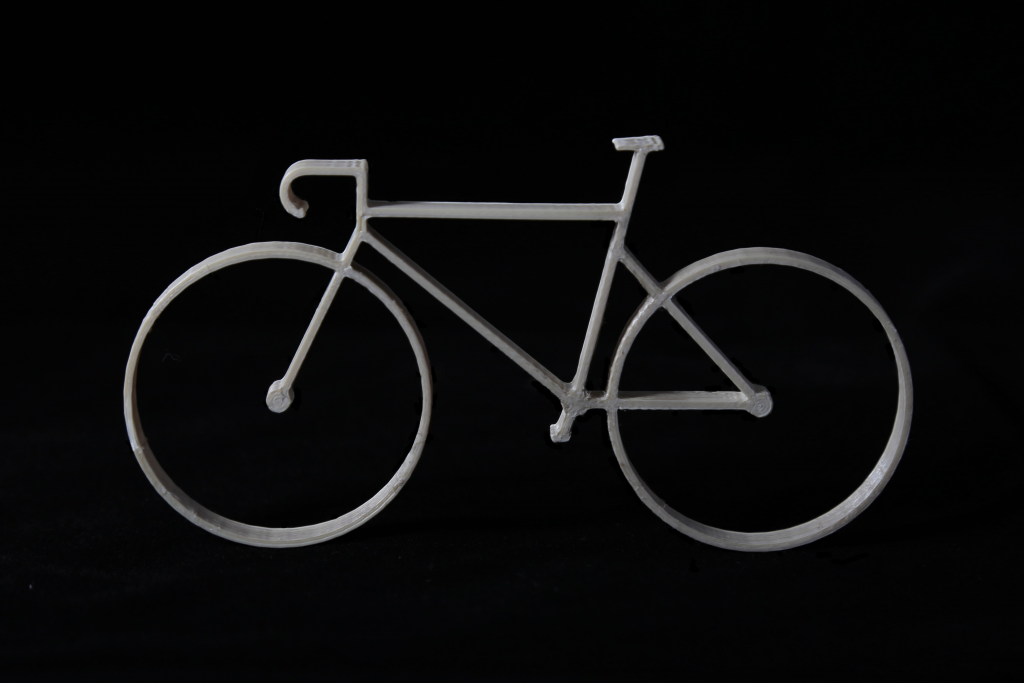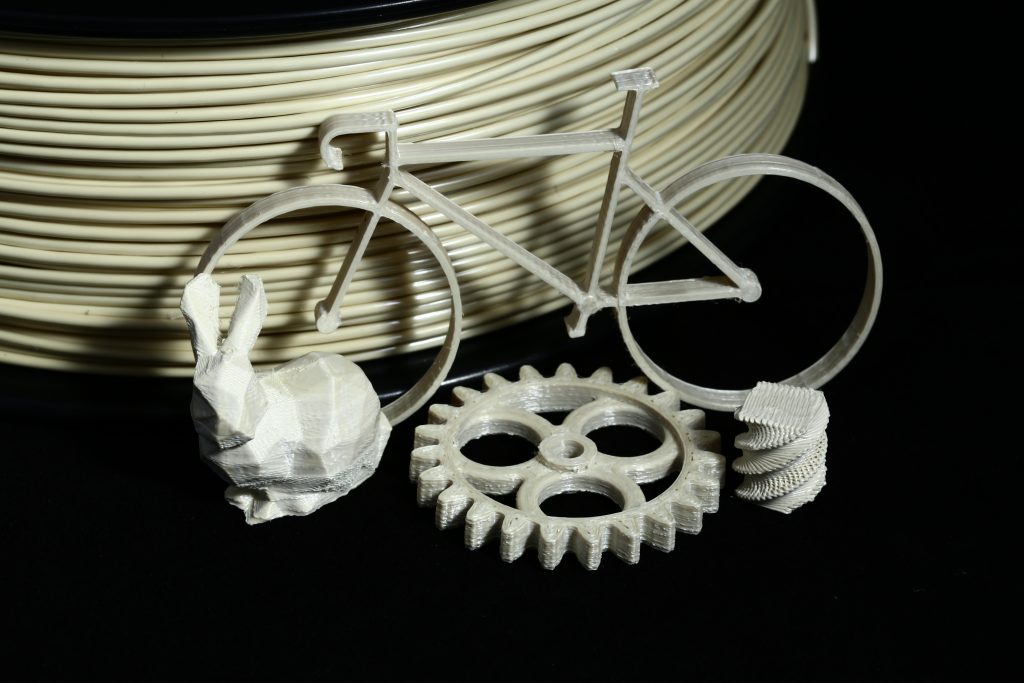Recently the Complex Materials Group and Soft Materials Group at ETH Zürich, Switzerland, collaborated to develop a low cost, recyclable and high strength liquid crystal polymer (LCP) material for 3D printers.
To learn more about this carbon fiber competitor I spoke to Silvan Gantenbein, co-author of the LCP study and PhD Candidate with the Complex Materials Group at ETH, about bioinspired design, future work and commercial availability of the new material.

3D Printing Industry: What are the primary focuses of the Complex Materials Group at ETH Zurich?
Silvan Gantenbein, ETH Zürich: The Complex Materials lab at ETH Zürich focuses on processing routes to create materials with complex architectures at different length scales and on understanding their structure-property relations. These complex hierarchical architectures are wide-spread in biological materials, for example in nacre and wood where they result in outstanding mechanical properties.
Therefore, the group is especially interested in understanding these biological structures and using their biological design principle to create high-performance materials. One tool to achieve this complexity is 3D printing. In this [most recent] project we collaborated with the Soft Materials group at ETH Zurich and combined their expertise on liquid crystal polymer processing with our expertise on 3D printing.

3D Printing Industry: What were the main aims of your LCP material research?
Silvan Gantenbein: The main aim of this approach was to digitally design and fabricate tough and complex-shaped lightweight polymers exhibiting programmable fibre architectures inspired by the exquisite multiscale structure of biological materials such as spider silk and wood.
These breakthrough structures and properties are achieved by combining the top-down spatial control over material deposition provided by the 3D printer with the tunable orientation of self-assembling thermotropic liquid crystal polymers.

3D Printing Industry: Can you give us any further information about the recyclability of materials developed in this study?
Silvan Gantenbein: The liquid crystal polymer used in this study is fully recyclable after printing and can be reprocessed, for example again by printing. However, the optional annealing step increases the molecular weight of the polymer and also creates crosslinks which increases the melt-point and the viscosity of the melt. This means that once the material has been subjected to an annealing step in cannot be used again in the same way. Further, as a synthetic polymer it cannot easily be degraded by biological organisms.
3D Printing Industry: What is the next step for this research?/Are you seeking a partner to commercialize the bioinspired materials?
Silvan Gantenbein: We are trying to push the mechanical properties that we can achieve with the LCPs even higher and also perform different mechanical tests to understand the system more precisely. We do this with the focus of developing real-life applications for automotive, aerospace or biomedical.
So yes, we are definitely interested in commercializing the technique with industry partners.

3D Printing Industry: Can you provide a summary of other 3D printing related projects currently ongoing at the school?
Silvan Gantenbein: The lab works on a variety of 3D printing materials and approaches ranging from 3D printed soft robots from silicone to printing of functional materials containing bacteria to printing of porous ceramics. Below are some of the activities going on in the lab:
– 3D printing of bacteria into functional complex materials
– 3D printing of robotic soft actuators with programmable bioinspired architectures
– Multimaterial magnetically assisted 3D printing of composite materials
– 3D Printing of Emulsions and Foams into Hierarchical Porous Ceramics
– Cellulose Nanocrystal Inks for 3D Printing of Textured Cellular Architectures
– 3D Printing of Materials with Tunable Failure via Bioinspired Mechanical Gradients
The full letter discussing the LCP material, “Three-dimensional printing of hierarchical liquid-crystal-polymer structures,” is published online by nature. It is co-authored by Silvan Gantenbein, Kunal Masania, Wilhelm Woigk, Jens P. W. Sesseg, Theo A. Tervoort and André R. Studart.
For more exclusive news and interviews subscribe to the 3D Printing Industry newsletter, follow us on Twitter, and like us on Facebook.
Search and post 3D Printing Jobs for new opportunities in academia and industry.
Featured image shows an illustration demonstrative of 3D printed LCP woodgrain. Image via ETH Zürich.



